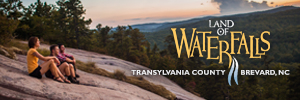USGS Quadrangle Topo Maps
About the maps:
The United States Geological Survey publishes standardized topographic maps of the entire United States. These maps have long been one of the best tools available for navigating the country's wild and urban terrain. However, they are often used only as a base layer for other map products which are updated more frequently and this is where you will usually find the most use for them. The maps show contour lines (lines of equal elevation) which depict natural features of the land, as well as streams, some roads, trails, forest types, buildings, and other natural and man-made features. The 7 1/2 minute quadrangle maps are published at a scale of 1:24,000.
How USGS Maps are Used on MTB WNC:
Scanned images of the USGS topographic quadrangles make up many of the base maps used on this site. They are freely available and in the public domain, making them a great option for this purpose. They are even available as an overlay for Google Maps, which this site is using more extensively now.
Important!
Keep these things in mind when viewing maps with the USGS quads as a base layer:
These maps are technical in nature. You should be familiar with reading a topographic map and the symbols used on them in order to make the best and safest use of them. If you don't know the maps' and your limitations, you can easily get yourself lost in the woods.
The maps are usually quite old, sometimes 20 and up to 40 years since the last editing. The USGS only updates maps frequently in areas where change is occurring rapidly (urban and developed areas). This means that what you see on the map isn't necessarily what you will find on the ground. Many trails, roads, buildings, clearcuts, etc. that are shown will have long since faded, and many that exist on the land may have come about long after the map was made. Maps drawn for this site, Google map mashups, and most other commercial map products will have updated trail information drawn on top of the USGS map base. Learn how to distinguish between the overlay and the base map.
For an excellent map that takes care of almost all of the above problems with the USGS maps, check into National Geographic's Trails Illustrated series of maps here. These maps, which use USGS maps as a base (so they are extremely accurate), are updated constantly and show all trails in the mapped area. They even show which trails are for mountain biking, hiking, and horseback riding! Though not free, they are worth the cost (around $10), and the maps are highly recommended for any extended stays in the area. The placement of trails on these maps is usually only approximate, however, so keep that in mind when using them.


